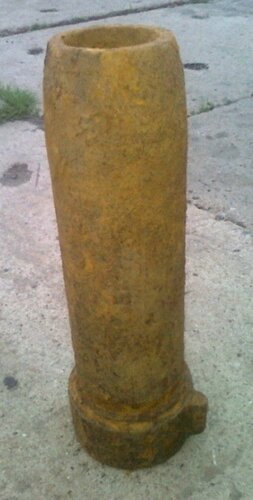British Ordnance Collectors Network
You are using an out of date browser. It may not display this or other websites correctly.
You should upgrade or use an alternative browser.
You should upgrade or use an alternative browser.
Osm-152
- Thread starter sudelmuk
- Start date
B
bar5428
Guest
sudelmuk
HONORED MEMBER RIP
Yes, please!We want a full report about these almost unknown models, please ... :tinysmile_twink_t:
stecol
To navigate on the fantastic saper.etel.ru-site is nearly impossible for foreigners.
Yes, please!
To navigate on the fantastic saper.etel.ru-site is nearly impossible for foreigners.
On Saper you can`t fined OZM-145 and OZM-165. I`ll try help with information about those mines
Sudelmuk, if something difficult to fined and understood on Saper ask here. It isn`t difficult to help
For all man on Women day some present 
OZM-145.
Developed by Margolin M.N. (Марголин М.Н.) Mine OZM-145 simillar to OZM-152, but much more easier. Mine can jump, use only with electric blasting cap. Looks like shell, in wich inside we can see two box: down for lifting charge (black powder) and top box - for explosive. Explosive detonating with Bickford fuse with blasting cap.
Length - 440 mm. Diameter - 145 mm. Weight of mine - 34 kg. Weight of explosive (TNT) - 3.8 kg. Weight of powder filling charge - 0.1 kg.
OZM-165.
Developed by Rabinovich Ya.M. (Рабинович Я.М.) Mine OZM-165 can`t jump. Mine placed on earth surface and usually in winter. Useing with electric blasting cap. Explosive - amatol with TNT block. OZM-165 was useing since 1942. Length - 300 mm. Diameter - 165 mm. Weight of mine - 25 kg. Weight of explosive (amatol) - 4 kg. Weight TNT block - 0.2-0.3 kg. The radius of the effective lesion - 35 m.
OZM-145.
Developed by Margolin M.N. (Марголин М.Н.) Mine OZM-145 simillar to OZM-152, but much more easier. Mine can jump, use only with electric blasting cap. Looks like shell, in wich inside we can see two box: down for lifting charge (black powder) and top box - for explosive. Explosive detonating with Bickford fuse with blasting cap.
Length - 440 mm. Diameter - 145 mm. Weight of mine - 34 kg. Weight of explosive (TNT) - 3.8 kg. Weight of powder filling charge - 0.1 kg.
OZM-165.
Developed by Rabinovich Ya.M. (Рабинович Я.М.) Mine OZM-165 can`t jump. Mine placed on earth surface and usually in winter. Useing with electric blasting cap. Explosive - amatol with TNT block. OZM-165 was useing since 1942. Length - 300 mm. Diameter - 165 mm. Weight of mine - 25 kg. Weight of explosive (amatol) - 4 kg. Weight TNT block - 0.2-0.3 kg. The radius of the effective lesion - 35 m.
Great Ivan ! :top:
There are pictures, photos or cutaways of these weapons ?
Thanks
stecol
I don`t have any photo not this very rare mine, but and OZM-152
I`ll put here two picture OZM-145 and OZM-165 which I have
Very interesting. Howold those documents?Some German documents on them:
Maybe it will help us to know when started use OZM-145 and OZM-165.


 stretch of the CF-2. For the entire length of the hull in the center is a glass primer (4) the completed drafts of pressed TNT, the intermediate components of the detonator. The internal cavity of the body is filled with melted TNT, constituting the bursting charge (12). On top of the lid enclosure is closed privintnoy (1) in which the ring is screwed to lower the mines into the well.
stretch of the CF-2. For the entire length of the hull in the center is a glass primer (4) the completed drafts of pressed TNT, the intermediate components of the detonator. The internal cavity of the body is filled with melted TNT, constituting the bursting charge (12). On top of the lid enclosure is closed privintnoy (1) in which the ring is screwed to lower the mines into the well. 
 these mines are called "AUR with the UCMJ."
these mines are called "AUR with the UCMJ."  it is advisable to place it in a wooden box, which then placed in a pit. This is necessary so that the freezing of the soil is not frozen into a mine in the ground. When the ground forces vmerzanii powder charge may not be enough to throw mines. However, an explosion will occur in all cases.
it is advisable to place it in a wooden box, which then placed in a pit. This is necessary so that the freezing of the soil is not frozen into a mine in the ground. When the ground forces vmerzanii powder charge may not be enough to throw mines. However, an explosion will occur in all cases.



